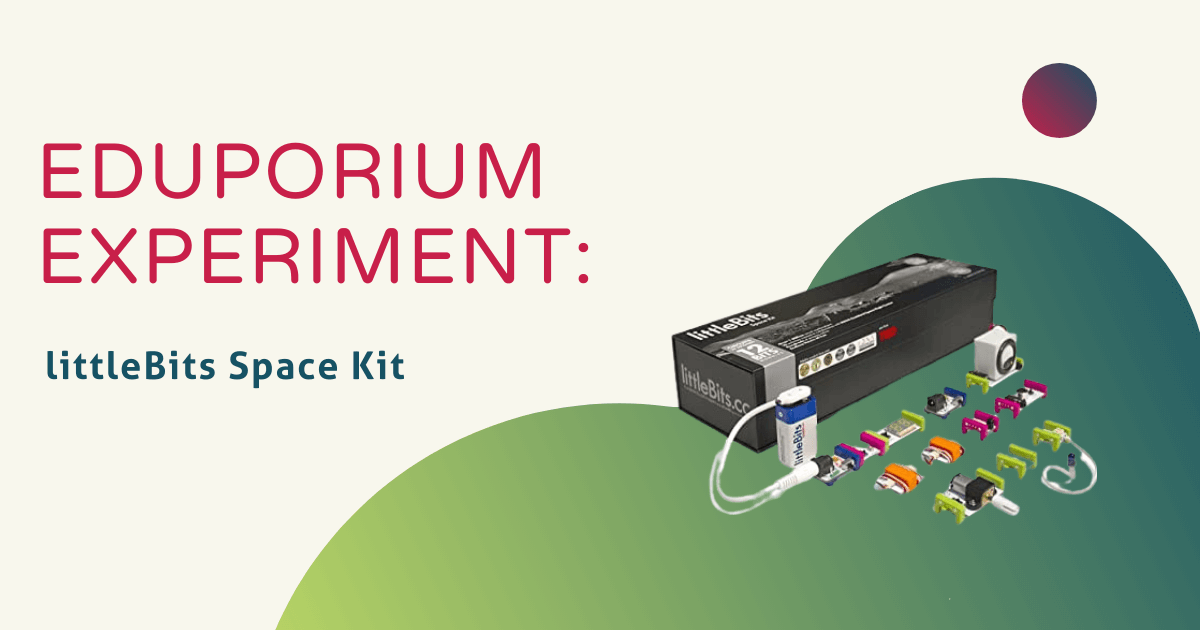The littleBits Space Kit, developed in collaboration with NASA, brings an aspect of interactive exploration to problem-based learning. Designed for use in junior high and high school, the Space Kit is one of the more advanced kits in the littleBits progression, but definitely one of the most exciting to use! The Space Kit helps kids launch experiments that skyrocket engagement in PBL as scientific principles, like energy, come to life. For an easy introduction, the Space Kit comes with a 'Getting Started' guide featuring 10 pre-planned STEM activities that brilliantly make use of all 12 modules and truly help maximize retention for all types of learners!
The best part about the Space Kit is that students are able to expand on an area of personal interest through projects that are actually beneficial to them. So, not only does the Space Kit continue with illustrating more complex circuitry concepts, it provides a specialized introduction to one of the most prolific areas of science. It also offers mini lessons so that kids know what they're looking at when they see something like electromagnetic energy in action. Some of the included projects even feature questions for kids to think about and answer along the way—and the best part is they can work together the entire time!
I tried my hand at building an Energy Meter—one of the simpler project ideas in the Space Kit. I liked it because the only extra material I needed was a pen—and there are a million of those floating around! To make the circuit, I just needed the battery, the power module, the light sensor module and the number module as you can see in the picture above. Since the light sensor was set to 'light' mode, the number sensor immediately recorded an energy level of 99 as soon as I turned it on because it was bright and sunny in our office. When I covered up the light sensor with my finger, however, the energy level dropped to 65, showing how sensors respond differently when affected by different energy sources.
You could also set the light sensor module to 'dark' mode and the number module would instantly show 00 since the room was so bright. When I covered the sensor with my finger again, it only went up to a reading of 19! This experiment is a pretty good way of exploring variables and how they affect scientific outcomes on the Earth and in space. Just placing a finger in a certain spot drastically affected the number reading on the number module, so imagine how a simple miscalculation could affect a mission in space! There are all kinds of things you can test and determine the energy levels inside, including a remote control, a glass of water or just the wall! The Space Kit offers tons of in-depth possibilities to help build the STEM stars of tomorrow.
If you have any ideas or suggestions for products you'd like to see featured on the Eduporium Experiment, comment below or send us a message on Twitter or Facebook!



